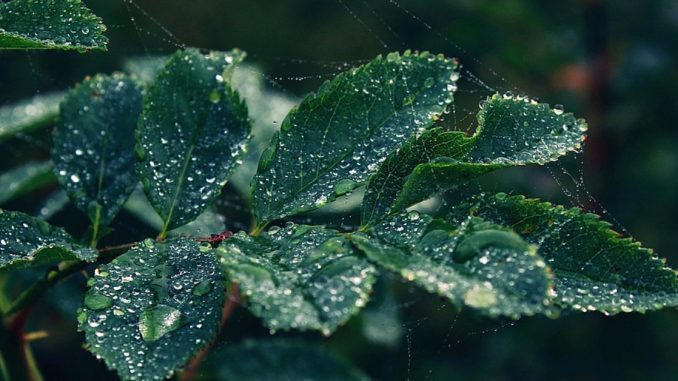
By Ahmed Sherrif
The team studied a specific plant–the Dragon’s lily head (Gladiolus dalenii)–for its unique surface property.
Nature has interesting ways of harvesting energy, from perfecting photosynthesis, to breaking down food for a living being. It has also perfected the art of harvesting water. The darkling beetle, for instance, could survive in the harshest of heat by using its hardened shell.
The shell contains tiny grooves or bumps where water is condensed and channelled to the beetle’s mouth. There is also the Bermuda grass which turns fog into water for the insect’s use!
And studying these phenomena, researchers from IIT have now developed a novel technique to harness water from fog!
The research team led by Dr Venkata Krishnan, Associate Professor of Chemistry at the School of Basic Sciences, IIT Mandi, studied the intricate structures on plants which capture water from the air, and mimics them to build materials that can harvest water.
“There are several plants in arid and semi-arid regions of the world whose leaves can harvest water from dew and fog. If they can do it, so can we,” Dr Krishnan told DNA India.

The IIT research team studied a specific plant–the Dragon’s lily head (Gladiolus dalenii)–for its unique surface property. The surface patterns on the leaf were evaluated on micrometre and nanometre scales, in relation to their water harvesting properties, and the patterns were replicated on a polymer material.
While studying the surface, the researchers found some interesting observations like well-arranged conical spines with sharp edges and gradient grooves which were arranged in order. They also found that the conical spines give a larger surface area, hence more fog gets deposited, and the grooves were used to transport the water that was once fog.
Replicating this design on a polymer material using a lithographic technique, the researches could mimic the particular structural trait. With this, the team experimented to see how much fog could be harvested with the developed material.
It was found that there was an increase of about 230 per cent on the fog harvesting performance of the patterned samples, compared to an unpatterned control sample.
Speaking about how this method could be adopted nationwide, Krishna said to The Statesman, “Collaborative efforts between scientists, industry and policymakers can enable furthering of this technology to provide drinking water to some or all of the 12 per cent of the underprivileged in the country.”
Source: India Today

Leave a Reply